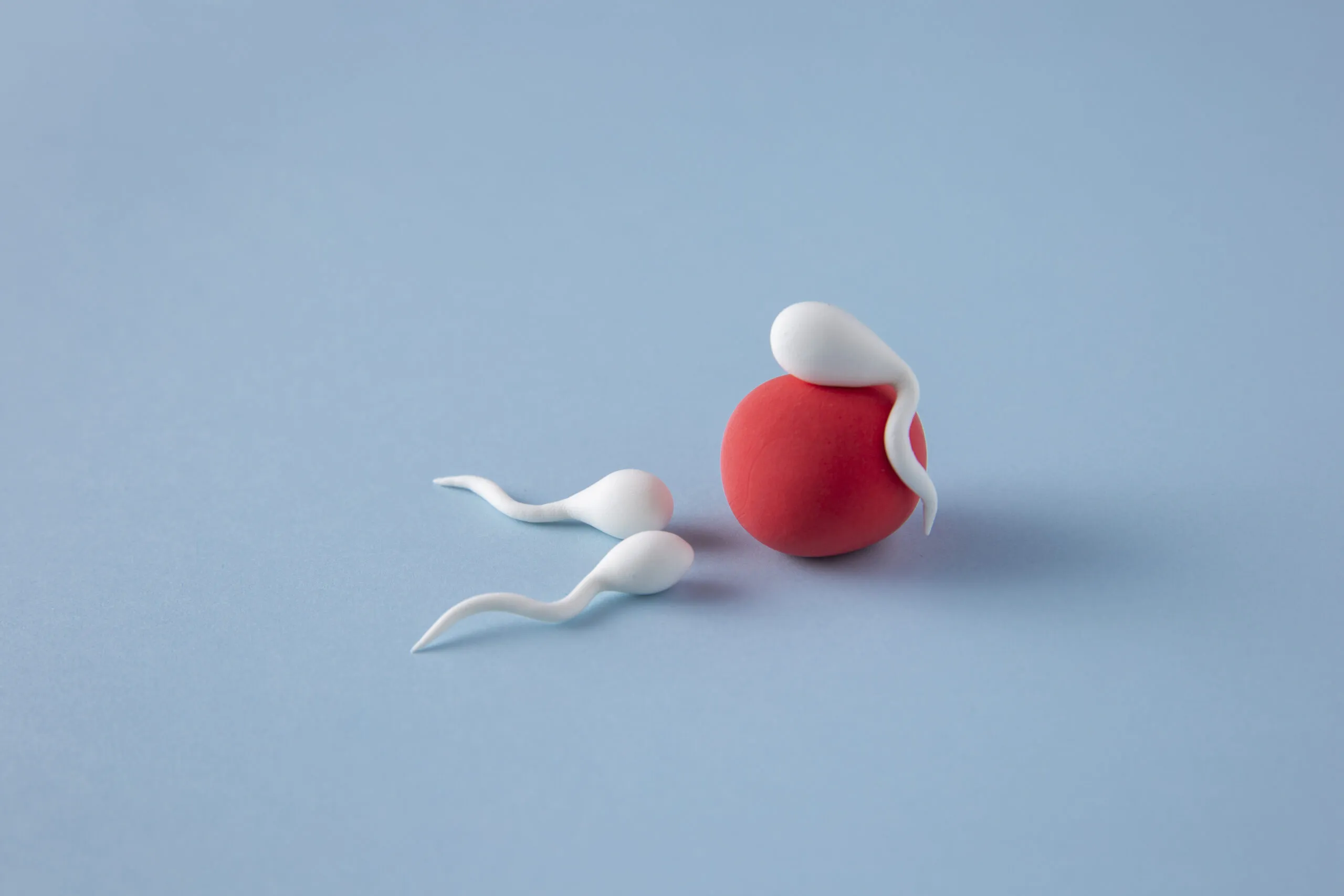Male infertility can be a deeply emotional and complex issue, affecting nearly half of all couples who face difficulties conceiving. Among the various causes of male infertility, obstructive azoospermia is a condition that often goes undetected until a couple begins fertility testing. Unlike other forms of azoospermia, this condition results from a physical blockage that prevents sperm from being released during ejaculation, even though sperm production in the testes is typically normal.
In this blog, we’ll explore what obstructive azoospermia is, its causes, symptoms, how it is diagnosed, and the available treatment options. Understanding this condition can provide clarity and direction for those navigating the challenges of infertility.
What Is Obstructive Azoospermia?
Azoospermia is a medical condition where no sperm is found in the semen during ejaculation. It is diagnosed through a semen analysis—a standard fertility test for men. Azoospermia is classified into two main types:
- Obstructive azoospermia
- Non-obstructive azoospermia
Obstructive azoospermia occurs when sperm is produced normally in the testicles but cannot travel through the reproductive tract due to a blockage in the ducts. This blockage can occur at various points, such as the epididymis, vas deferens, or ejaculatory ducts.
This condition affects approximately 40% of men diagnosed with azoospermia, making it a significant factor in male infertility.
Common Causes of Obstructive Azoospermia
Obstructive azoospermia can be caused by various congenital, infectious, or surgical factors. Understanding these causes is critical for diagnosis and treatment.
1. Congenital Absence of the Vas Deferens (CAVD)
Some men are born without vas deferens—tubes that transport sperm from the testicles to the urethra. This is often associated with a genetic condition like cystic fibrosis.
2. Previous Infections
Infections such as epididymitis or sexually transmitted infections (STIs) like gonorrhea and chlamydia can lead to inflammation and scarring that blocks the sperm ducts.
3. Surgical Injury
Procedures like hernia repairs, vasectomies, or prostate surgeries may unintentionally damage the reproductive tract, leading to a blockage.
4. Trauma
Injury to the testicles, pelvis, or groin area can also result in scarring or ductal blockage.
5. Cysts or Tumors
Cysts in the seminal vesicles or ejaculatory ducts can physically obstruct the flow of sperm.
Signs and Symptoms to Watch For
Obstructive azoospermia does not typically present with obvious symptoms, making it difficult to detect without medical evaluation. However, some men may experience:
- Low semen volume or dry ejaculation
- Normal libido and sexual function
- Pain or swelling in the scrotum (if infection or inflammation is present)
- Prior history of STIs or scrotal surgery
The absence of sperm in the semen is usually discovered during a routine semen analysis, often after a couple is unable to conceive.
How Is Obstructive Azoospermia Diagnosed?
A thorough evaluation is essential to confirm obstructive azoospermia and differentiate it from non-obstructive types. Diagnosis typically involves:
1. Semen Analysis
This test examines the semen for sperm count, motility, and morphology. In obstructive azoospermia, semen volume may be low, and no sperm are present despite normal production in the testicles.
2. Hormone Testing
Blood tests check levels of FSH, LH, testosterone, and inhibin B. In obstructive azoospermia, hormone levels are generally normal, since sperm production is not impaired.
3. Scrotal Ultrasound
Ultrasound imaging may help identify abnormalities in the epididymis, vas deferens, or testicular structure.
4. Transrectal Ultrasound (TRUS)
TRUS is used to examine the prostate, seminal vesicles, and ejaculatory ducts for obstructions like cysts or calcifications.
5. Genetic Testing
If congenital blockage is suspected, especially in cases with absent vas deferens, genetic testing for cystic fibrosis gene mutations may be advised.
6. Testicular Biopsy
A biopsy can determine whether sperm production is occurring. In obstructive cases, sperm is present in the testicular tissue but absent in the semen.
Treatment Options for Obstructive Azoospermia
The good news is that obstructive azoospermia is treatable, and many men with this condition can father biological children with appropriate medical support.
1. Surgical Correction
In some cases, microsurgical reconstruction can remove the blockage. Common procedures include:
- Vasovasostomy – reconnecting the vas deferens
- Vasoepididymostomy – bypassing the blockage in the epididymis
- Transurethral resection of the ejaculatory ducts (TURED) – used for ejaculatory duct obstruction
Success rates vary based on the cause and location of the blockage.
2. Sperm Retrieval Techniques
When surgery is not an option or unsuccessful, sperm can be extracted directly from the testicles or epididymis using the following methods:
- PESA (Percutaneous Epididymal Sperm Aspiration)
- TESA (Testicular Sperm Aspiration)
- TESE (Testicular Sperm Extraction)
- Micro-TESE (Microsurgical Testicular Sperm Extraction)
These retrieved sperm are then used for IVF with ICSI (Intracytoplasmic Sperm Injection), where a single sperm is injected directly into an egg.
3. Assisted Reproductive Technologies (ART)
Even if natural conception isn’t possible, advanced techniques like IVF-ICSI make it possible to achieve pregnancy using the man’s own sperm.
Lifestyle and Emotional Impact
Being diagnosed with obstructive azoospermia can be emotionally taxing. Many men feel overwhelmed, anxious, or frustrated, especially when trying to conceive. It’s important to understand:
- Male infertility is common, and help is available
- Emotional support from a partner, counselor, or support group can be beneficial
- Fertility clinics today offer highly effective solutions tailored to each case
Adopting a healthy lifestyle—avoiding smoking, excessive alcohol, and heat exposure—can support overall reproductive health, though it may not directly impact the blockage.
When to See a Fertility Specialist
If you’ve been trying to conceive for over a year without success, it’s time to see a fertility specialist. Men should undergo a semen analysis early in the evaluation process. Early diagnosis of conditions like obstructive azoospermia increases the chances of successful treatment.
Dr. Mazen Al-Dayeh, a renowned expert in reproductive health and male infertility, has extensive experience in diagnosing and managing obstructive azoospermia. His compassionate and precise approach has helped many couples take confident steps toward parenthood.
Final Thoughts
Obstructive azoospermia, while a complex condition, is not a dead end. With modern diagnostics and treatment options—including surgical correction, sperm retrieval, and assisted reproductive technologies—most men with this condition can achieve biological fatherhood.
Early diagnosis, expert care, and emotional support are key. If you or your partner have concerns about male fertility, seeking timely medical guidance is the first and most important step.
For those looking to explore solutions in a supportive and expert-led environment, Best Life Fertility Center, considered one of the best fertility clinic in Dubai, offers comprehensive fertility care tailored to your unique needs.
Ready to Take the First Step Toward Fatherhood?
If you suspect obstructive azoospermia may be affecting your fertility, don’t wait. Early diagnosis and the right treatment plan can make all the difference. Schedule a consultation with a trusted fertility expert and explore your options with confidence.
At Best Life Fertility Center, under the guidance of Dr. Mazen Al-Dayeh, you’ll receive personalized care backed by advanced technology and a compassionate approach from the best fertility clinic in Dubai.
Take the first step today — your future family is waiting.
Visit bestivf.ae to learn more or book an appointment.




















